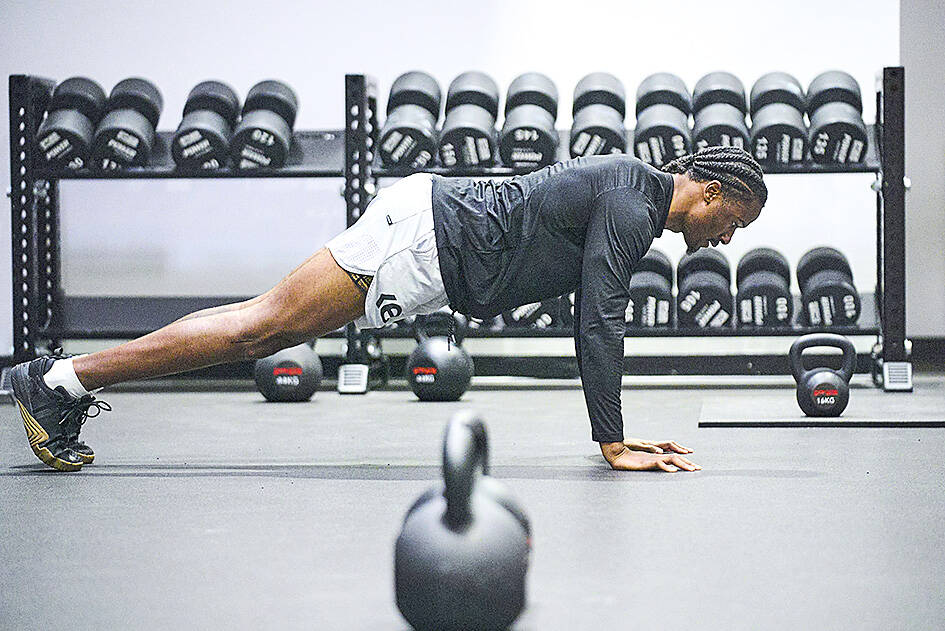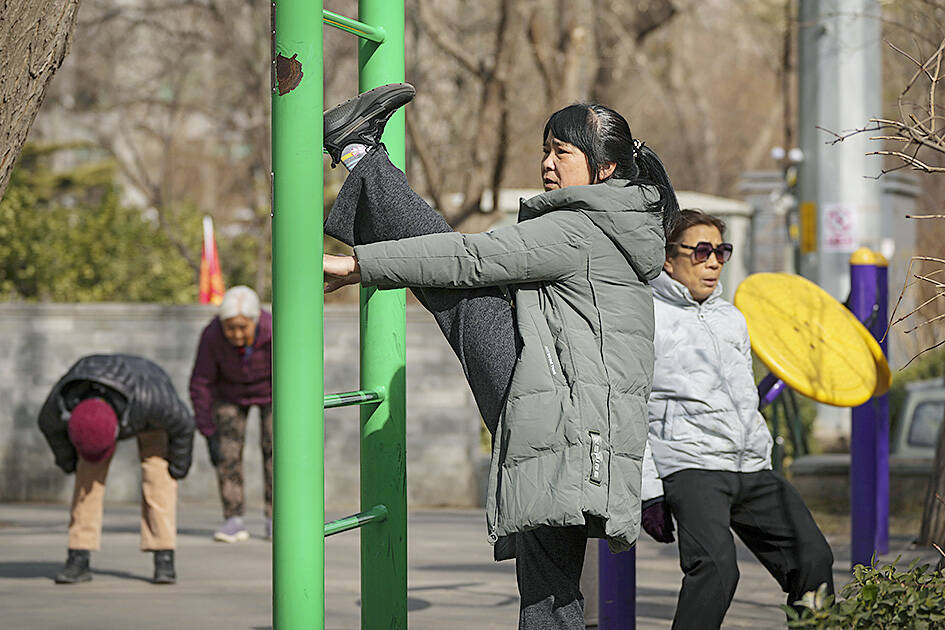The gym is back. A few years of exhorting people to socially distance and wipe down machines, gym chains are removing cleaning stations, while their clientele go back to sharing kit and sweating all over the benches. Nature, as they say, is healing.
But how many people are using their membership, and how much value are they getting out of the gym when they go? As a former editor of Men’s Fitness magazine, I have been going to gyms for more than a decade, and I still see half a dozen things I wish I could mention to people every time I go. So here are the tips I wish were in every gym’s welcome pack, alongside a bunch of the mistakes that it took me years to learn I was making. I am not going to tell you to wipe up your sweat, though. Hopefully, you are doing that already.
PEOPLE ARE LOOKING AT YOU

Photo: AP
In lists of advice for the gym-shy, you often see something like: “Nobody else is watching what you’re doing, or even cares — they’re all too focused on their own workouts.”
This is a bit like telling children that all bullies are secretly cowards — it is a nice thing to say, but it isn’t true. People watch and judge others everywhere, and the gym is no exception. Unless you are somewhere incredibly quiet and you’re supernaturally focused, you will occasionally see someone checking out what you are doing — glancing at what weights you are lifting, or how fast you have set the treadmill.
The good news? This usually doesn’t much matter, because it is vanishingly unlikely that they are going to interact with you, at least if you are male.

Photo: AP
“For women, there’s more of a problem with people wanting to comment on your form — either to correct it, or compliment you on it,” says my wife, who has been a personal trainer for more than a decade.
“My general advice is to wear headphones, look purposeful and keep your response to a noncommittal: ‘Thanks.’ It’s going to happen sometimes, but it doesn’t have to ruin your workout.”
LEARN TO ‘WORK IN’
For some reason, probably due to the years of social distancing — the noble art of sharing bits of kit has fallen out of fashion over the past few years. But if you train in a crowded gym, there is a chance that you will have to do it occasionally, so it is worth knowing the proper form. Generally speaking wait until the other person has finished their set of exercises (usually marked by them putting the weight down; machines such as the leg press and pec deck are trickier, as people tend to stay seated between sets, but the same principles apply), then catch their eye and politely ask how many sets they have left.
Depending on how many this is, and how long they are resting for between each, it is fine to ask if you can “work in,” or do your exercises while they are resting. They can always refuse, but there is nothing wrong with posing the question.
Obviously, the reverse applies if someone asks you to work in — and you might one day graduate to asking the obviously nervous person hovering around your rack if they need to use it. That’s advanced stuff, though — so for now, concentrate on the next bit …
CORRECT SQUAT RACK USE
Here is what every experienced gym person says to themselves at least once a week when they catch a glimpse of someone squatting with a barbell: “Put the hooks lower.”
In case you are completely unfamiliar with them, a squat rack works like this: a set of adjustable hooks holds the bar, you get underneath it, lift it up, then back out and do your set. The tricky bit? Lots of people put the hooks too high, so they are going up on tiptoe to remove or return the bar, which isn’t ideal at any weight, but gets downright dangerous when you are lifting heavy. Put them lower: you should quarter-squat the bar out of the rack, then, when it’s time to put it back, walk it straight into the upright part of the rack then let it drop into the hooks. Speaking of which …
PUT YOUR KIT BACK
This isn’t always obvious — we have all been to gyms that look like a teenager’s bedroom — but it is generally considered bad form to leave dumbbells, plates and handles for the machines on the floor when you finish with them. Think of it like a cooldown from the rest of your workout, or like holding a door for someone: nobody’s going to make you do it, but it is annoying for everyone if you don’t.
TRAINERS
Here’s a secret: it’s possible to get your level 3 personal trainer qualification, the minimum that most gyms demand, in about five weeks. Lots of personal trainers are lifelong students of exercise, who constantly do courses, read studies and experiment on themselves to fine-tune their knowledge — but more than a few don’t bother with any of that.
In general, it is a good sign if a trainer can point to clients who have got the results you’re looking for, with the same limitations you have. If they are touting six-week, six-pack transformations, make sure they weren’t doing them all with responsibility-free twentysomethings.
Good trainers will also be able to explain why you are doing the moves and how to do them in a way that makes sense to you. And while it is nice to build up a rapport with your trainer, it is fine to be a bit wary of one who spends more time talking than taking you through your workout.

On April 26, The Lancet published a letter from two doctors at Taichung-based China Medical University Hospital (CMUH) warning that “Taiwan’s Health Care System is on the Brink of Collapse.” The authors said that “Years of policy inaction and mismanagement of resources have led to the National Health Insurance system operating under unsustainable conditions.” The pushback was immediate. Errors in the paper were quickly identified and publicized, to discredit the authors (the hospital apologized). CNA reported that CMUH said the letter described Taiwan in 2021 as having 62 nurses per 10,000 people, when the correct number was 78 nurses per 10,000

As we live longer, our risk of cognitive impairment is increasing. How can we delay the onset of symptoms? Do we have to give up every indulgence or can small changes make a difference? We asked neurologists for tips on how to keep our brains healthy for life. TAKE CARE OF YOUR HEALTH “All of the sensible things that apply to bodily health apply to brain health,” says Suzanne O’Sullivan, a consultant in neurology at the National Hospital for Neurology and Neurosurgery in London, and the author of The Age of Diagnosis. “When you’re 20, you can get away with absolute

When the South Vietnamese capital of Saigon fell to the North Vietnamese forces 50 years ago this week, it prompted a mass exodus of some 2 million people — hundreds of thousands fleeing perilously on small boats across open water to escape the communist regime. Many ultimately settled in Southern California’s Orange County in an area now known as “Little Saigon,” not far from Marine Corps Base Camp Pendleton, where the first refugees were airlifted upon reaching the US. The diaspora now also has significant populations in Virginia, Texas and Washington state, as well as in countries including France and Australia.

May 5 to May 11 What started out as friction between Taiwanese students at Taichung First High School and a Japanese head cook escalated dramatically over the first two weeks of May 1927. It began on April 30 when the cook’s wife knew that lotus starch used in that night’s dinner had rat feces in it, but failed to inform staff until the meal was already prepared. The students believed that her silence was intentional, and filed a complaint. The school’s Japanese administrators sided with the cook’s family, dismissing the students as troublemakers and clamping down on their freedoms — with